- Home
- Robert A. Heinlein
The Pursuit of the Pankera: A Parallel Novel About Parallel Universes
The Pursuit of the Pankera: A Parallel Novel About Parallel Universes Read online
THE PURSUIT OF THE
PANKERA
A PARALLEL NOVEL ABOUT PARALLEL UNIVERSES
ROBERT A. HEINLEIN
The Pursuit of the Pankera: A Parallel Novel About Parallel Universes Copyright © 2020 by The Robert A. and Virginia Heinlein Prize Trust. All rights reserved. This book may not be copied or reproduced, in whole or in part, by any means, electronic, mechanical, or otherwise without written permission except short excerpts in a review, critical analysis, or academic work.
Trademarks John Carter of Mars®, Dejah Thoris®, Tars Tarkas™, Barsoom™, and A Princess of Mars® owned by Edgar Rice Burroughs, Inc. and used by permission.
More information on the worlds created by Edgar Rice Burrougsh may be found at erburroughs.com.
The Lensman series (and elements thereof) are properties created by Edward Elmer Smith (E. E. “Doc” Smith) and managed by the Edward Elmer Smith estate.
This is a work of fiction. Any resemblance to any actual persons, events, or localities is purely coincidental and beyond the intent of the author and publisher.
Jacket art by Scott Grimando, grimstudios.com
Project Editor: Patrick LoBrutto
Library of Congress Cataloging-in-Publication Data
Names: Heinlein, Robert A. (Robert Anson), 1907-1988, author.
Title: The pursuit of the Pankera : a parallel novel about parallel universes / Robert A. Heinlein.
Description: Rockville, NY : CAEZIK SF & Fantasy, an imprint of Arc Manor Publishers, [2020]
Identifiers: LCCN 2019059568 (print) | LCCN 2019059569 (ebook) | ISBN 9781647100018 (hardcover) | ISBN 9781647100025 (ebook)
Subjects: GSAFD: Science fiction.
Classification: LCC PS3515.E288 P88 2020 (print) | LCC PS3515.E288 (ebook) | DDC 813/.54--dc23
LC record available at https://lccn.loc.gov/2019059568
LC ebook record available at https://lccn.loc.gov/2019059569
ISBN EBOOK: 978-1-64710-002-5
ISBN HARDCOVER: 978-1-64710-001-8
First Edition. March 2020
An imprint of Arc Manor LLC
www.caezik.com
For Walter and Marion Minton
Contents
PUBLISHER’S NOTE
INTRODUCTION
by David Weber
I
— Zebadiah —
II
— Zebadiah —
III
— Zebadiah —
IV
— Deety —
V
— Jake —
VI
— Hilda —
VII
— Deety —
VIII
— Hilda —
IX
— Deety —
X
— Zebadiah —
XI
— Zebadiah —
XII
— Hilda —
XIII
— Zebadiah —
XIV
— Deety —
XV
— Hilda —
XVI
— Jake —
XVII
— Deety —
XVIII
— Zebadiah —
XIX
— Hilda —
XX
— Zebadiah —
XXI
— Jake —
XXII
— Zebadiah —
XXIII
— Jake —
XXIV
— Zebadiah —
XXV
— Zebadiah —
XXVI
— Zebadiah —
XXVII
— Zebadiah —
XXVIII
— Zebadiah —
XXIX
— Hilda —
XXX
— Zebadiah —
XXXI
— Zebadiah —
XXXII
— Hilda —
XXXIII
— Deety —
XXXIV
— Zebadiah —
XXXV
— Zebadiah —
XXXVI
— Jake —
XXXVII
— Zebadiah —
XXXVIII
— Deety —
XXXIX
— Zebadiah —
XL
— Deety —
XLI
— Zebadiah —
XLII
— Hilda —
XLIII
— Jake —
XLIV
— Zebadiah —
XLV
— Jake —
XLVI
— Hilda —
XLVII
— Zebadiah —
XLVIII
— Deety —
XLIX
— Zebadiah —
PUBLISHER’S NOTE
Most Heinlein fans know about The Number of the Beast, which deals with parallel universes. What most do not realize is that The Number of the Beast was one of two books Heinlein wrote about these parallel universes, although it was the only one published. No one is exactly sure why the other text was never published, but many theories have been put forth.
The unpublished manuscript was largely forgotten over time and only survived in fragments. A recent examination of the manuscript (along with Heinlein’s handwritten notes) made it clear that the fragments, if put together properly, would constitute the complete unpublished book. It has taken us approximately three years to put these pieces together and deal with certain other issues, but the new book is one hundred percent Heinlein. Other than regular editorial work, no additional author was asked to provide “fillers.”
The two books do share a common beginning (approximately one-third of the book), but then diverge completely in Chapter XVIII, right after the characters’ specially equipped car, the Gay Deceiver, makes its first jump to a parallel universe. We have placed a small marker <> at the appropriate spot to indicate where the divergence in texts begins.
Here, then, is The Pursuit of the Pankera.
Shahid Mahmud
Publisher
INTRODUCTION
by David Weber
So, the question I was assigned was “How did Robert Heinlein influence you?”
That, as they say, is a leading question, and I really doubt that any honest writer of science fiction could say that he or she has not been influenced by Heinlein. In some cases, by opposition to his more controversial stances on things like incest, or on the whole convoluted question of how he could write such competent heroines and yet cling to such “stereotypical” concepts about women. In other cases, by inspiration, either stylistic or philosophical, that threads its way into the writer’s work. TANSTAAFL, pay it forward, Grok—all of them, like so much else that Heinlein produced, are part of the building blocks of what we write, whether we want to call it “speculative fiction” or “science fiction.” Their echoes, their repercussions, continue to reverberate and to inspire.
But if the question is how did Robert Heinlein influence me, part of the answer is absurdly easy: he introduced me to science fiction at a very early age and stayed with me through high school, college, and beyond. Have Spacesuit Will Travel, Starman Jones, Rocket Ship Galileo, Space Cadet, The Star Beast, The Puppet Masters, Podkayne of Mars, Orphans of the Sky, Double Star, Citizen of the Galaxy, The Moon Is a Harsh Mistress, Glory Road, Stranger in a Strange Land … just that partial title list of only his novels is enough to explain why that was true. I always hate it when people ask me “which science fic
tion writer had the most influence on you,” because every science fiction writer I’ve ever read has influenced me, one way or another, and which one’s influence was greater probably depends at any given moment on what sort of story I’m telling at that moment. Despite that, I would say that the Big Four for me were: Heinlein, H. Beam Piper, Poul Anderson, and Sprague DeCamp, with honorable mentions to at least a dozen other names, including especially Andre Norton, Annie McCaffrey, Keith Laumer, and Patricia McKillip. Not necessarily in a stylistic sense, but in the sense of what the craft is all about. And every single time I list any of the authors who influenced me, the first one up is always Heinlein.
Possibly that’s because I met him at such an early age, although the first science fiction author(s) I ever read were Jack Williamson, followed by DeCamp and P. Schuyler Miller—go Genus Homo!—and because I was so early inculcated with both his writing voice and what he brought to the entire notion of what not just science fiction but humanity itself was about. He was an incredibly eloquent spokesman for his beliefs, he wasn’t afraid to allow those beliefs to evolve (or to refuse to evolve), and yet he never let the story suffer. He wrote muscular prose. He chose his verbs so carefully. He was unafraid of colloquialisms. He knew how to build entire worlds by inference, out of the mosaic details built into his stories’ walls. And he knew how to project both a character’s competence while dealing with problems and an abiding sense of wonder about the scale and scope of the universe in which those problems resided. And he showed in his juveniles an extraordinary ability to make those concepts available to young readers.
I found greater depth in his stories as I grew older, but that was because I had become aware of the depth, not because it hadn’t been there all along. I remember my reaction to Sam in Starman Jones. The first time I read the book, I recognized him as the mentor, the good adult, and I saw his death as a heroic act. But I missed the profundity of the epitaph “He ate what was set before him.” That was Heinlein in a nutshell: the responsible human being, the competent human being, the human being who knows how to die gallantly when faced with the Birkenhead drill. Not because it’s heroic, but because it’s what responsible humans do. Whether it’s Sam, or Podkayne, or “Kip” Russell, Pewee, and Mother Thing, or Lieutenant Dahlquist, or Lazarus Long and “Slipstick” Libby, or “Mannie” O’Kelley-Davis and Mike, his protagonists are who they are and refuse to be diverted from doing what they believe is the right thing.
I wasn’t really aware, as a preteen reader, of the more socially controversial aspects of his writing, nor of how adroitly he slipped some of it in. He was, of course, a product of his times—he was seven years younger than my grandmother—and that shows, especially in some of his tropes and, probably, in the characteristics of his female characters which strike a twenty-first-century reader as profoundly stereotypical. Given that he was seven years old when World War I began (echoes of Woodrow Wilson Smith, anyone think?), however, what’s actually surprising is how often he evaded stereotypes. His opposition to racism was fierce yet subtle and, like Piper, he straddled the transition from women as props to women as fully realized protagonists. Sometimes they hit false notes, but Heinlein was unafraid of that. He was totally prepared to face the slings and arrows for writing stories that told details he thought needed telling. Indeed, he would have courted far more of those slings and arrows—and counted the wounds as honor scars—had he not so often had to deal with editorial insistence. I happen to think that the ending of Podkayne as originally published is a good, strong story, but the altered ending changed the story Heinlein wanted to tell. I think, had he been allowed to publish his original manuscript, it would have been more readily recognizable as the profoundly cautionary tale he had in mind when he wrote it.
Despite the well-deserved acclaim Stranger in a Strange Land and The Moon Is a Harsh Mistress have received, and despite my own love for the second of those titles, especially, I honestly believe that Heinlein’s greatest contribution to the field lies in those juveniles of his. He refused to write “down” to kids. His readers were young, he would not treat them as infants, and he challenged them to deal with some pretty darned adult topics. But most of all, he instilled both a sense of wonder and the concept—the belief—that the future was what we chose to make it. That it was up to us, as human beings, to reach for that future, to accomplish it, to nurture it, and to defend it. Generations of astronauts, scientists, innovators—and writers—have been exposed to that wonder and that belief, and Heinlein has been their unapologetic, sometimes caustic, sometimes amusing, always entertaining guide. Often enough, their mentor.
And he remains in print today, thirty years after his death, because he is still doing that. Sure, the science is dated, societies have shifted and changed, and we’ve gone to places not even Robert Heinlein could have envisioned when he wrote “Life-Line” in 1939. All of that is true. But Heinlein continues to be read today because, as always, he is unapologetically Heinlein.
And, damn, but that man could write.
THE PURSUIT OF THE
PANKERA
I
Zebadiah
“He’s a Mad Scientist and I’m his Beautiful Daughter.”
That’s what she said: the oldest cliché in pulp fiction. She wasn’t old enough to remember the pulps.
The thing to do with a silly remark is to fail to hear it. I went on waltzing while taking another look down her evening formal. Nice view. Not foam rubber.
She waltzed well. Today most girls who even attempt ballroom dancing drape themselves around your neck and expect you to shove them around the floor. She kept her weight on her own feet, danced close without snuggling, and knew what I was going to do a split second before I led it. A perfect partner.
“Well?” she persisted.
My paternal grandfather—an unsavory old reactionary; the FemLibbers would have lynched him—used to say, “Zebadiah, the mistake we made was not in putting shoes on them or in teaching them to read—we should never have taught them to talk!”
I signaled a twirl by pressure; she floated into it and back into my arms right on the beat. I inspected her hands and the outer corners of her eyes. Yes, she really was young—minimum eighteen; Hilda Corners never permitted legal “infants” at her parties, maximum twenty-five, first approximation twenty-two. Yet she danced like her grandmother’s generation.
“Well?” she repeated more firmly.
“The operative symbols were ‘mad,’ ‘scientist,’ ‘beautiful,’ and ‘daughter.’ The first has several meanings—the others denote opinions. Semantic content: zero.”
She looked thoughtful rather than angry. “Pop isn’t rabid … although I did use ‘mad’ in ambivalent mode. ‘Scientist’ and ‘beautiful’ each contain descriptive opinions, I stipulate. But are you in doubt as to my sex? If so, are you qualified to check my twenty-third chromosome pair? With transsexual surgery so common I assume that anything less would not satisfy you.”
“I prefer a field test.”
“On the dance floor?”
“No, the bushes back of the pool. Yes, I’m qualified—laboratory or field. It was not your sex that lay in the area of opinion; that is a fact that can be established … although the gross evidence is convincing. I—”
“Ninety-five centimeters isn’t gross! Not for my height. One hundred seventy bare-footed, one eighty in these heels. It’s just that I’m wasp-waisted for my mass—forty-eight centimeters versus fifty-nine kilos.”
“And your teeth are your own and you don’t have dandruff. Take it easy, Deedee; I didn’t mean to shake your aplomb. But the symbol ‘daughter’ encompasses two statements, one factual—sex—and the other a matter of opinion even when stated by a forensic genetohematologist.”
“Gosh, what big words you know, Mister. I mean ‘Doctor.’ ”
“ ‘Mister’ is correct. On this campus it is swank to assume that everyone holds a doctorate. Even I have one, Ph.D. Do you know what that stands for?”
&
nbsp; “Doesn’t everybody? I have a Ph.D., too. ‘Piled Higher and Deeper.’ ”
I raised that maximum to twenty-six and assigned it as second approximation. “Phys. Ed.?”
“Mister Doctor, you are trying to get my goat. Won’t work. I had an undergraduate double major, one being Phys. Ed. with teacher’s credentials in case I needed a job. But my real major was math—which I continued in graduate school.”
“And here I had been assuming that ‘Deedee’ meant ‘Doctor of Divinity.’ ”
“Go wash out your mouth with soap. My nickname is my initials—Dee Tee. Or Deety. Doctor D. T. Burroughs if being formal, as I can’t be ‘Mister’ and refuse to be ‘Miz’ or ‘Miss.’ See here, Mister; I’m supposed to be luring you with my radiant beauty, then hooking you with my feminine charm … and not getting anywhere. Let’s try another tack. Tell me what you piled higher and deeper.”
“Let me think. Fly casting? Or was it basketweaving? It was one of those transdisciplinary things in which the committee simply weighs the dissertation. Tell you what. I’ve got a copy around my digs. I’ll find it and see what title the researcher who wrote it put on it.”
“Don’t bother. The title is ‘Some Implications of a Six-Dimensional Non-Newtonian Continuum.’ Pop wants to discuss it.”
I stopped waltzing. “Huh? He’d better discuss that paper with the bloke who wrote it.”
“Nonsense; I saw you blink—I’ve hooked you. Pop wants to discuss it, then offer you a job.”
“ ‘Job!’ I just slipped off the hook.”
“Oh, dear! Pop will be really mad. Please? Please, sir!”
“You said that you had used ‘mad’ in ambivalent mode. How?”
“Oh. Mad-angry because his colleagues won’t listen to him. Mad-psychotic in the opinions of some colleagues. They say his papers don’t make sense.”
“Do they make sense?”
“I’m not that good a mathematician, sir. My work is usually simplifying software. Child’s play compared with n-dimensional spaces.”
I wasn’t required to express an opinion; the trio started Blue Tango. Deety melted into my arms. You don’t talk if you know tango.

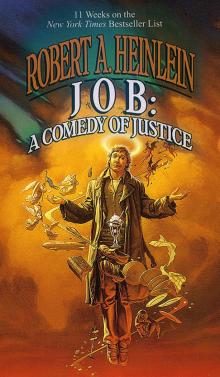 Job: A Comedy of Justice
Job: A Comedy of Justice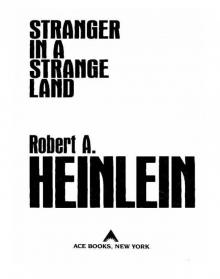 Stranger in a Strange Land
Stranger in a Strange Land The Worlds Of Robert A Heinlein
The Worlds Of Robert A Heinlein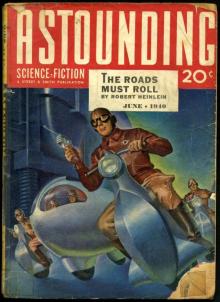 The Roads Must Roll
The Roads Must Roll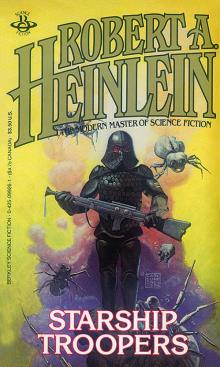 Starship Troopers
Starship Troopers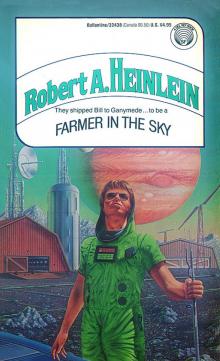 Farmer in the Sky
Farmer in the Sky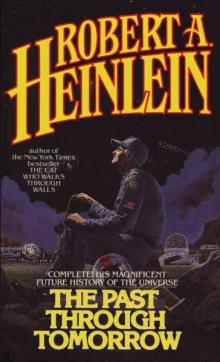 The Past Through Tomorrow
The Past Through Tomorrow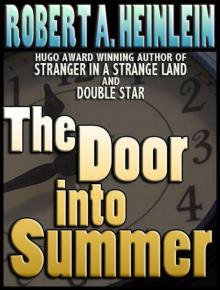 The Door Into Summer
The Door Into Summer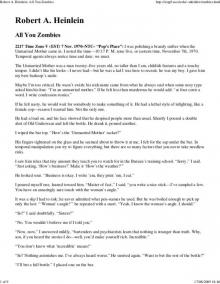 All You Zombies
All You Zombies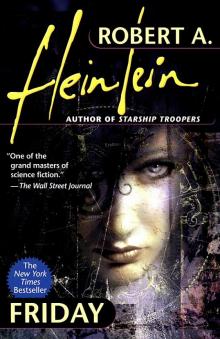 Friday
Friday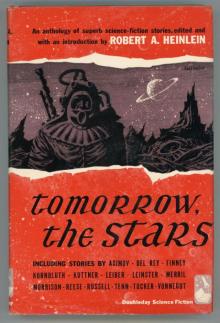 Tomorrow, the Stars
Tomorrow, the Stars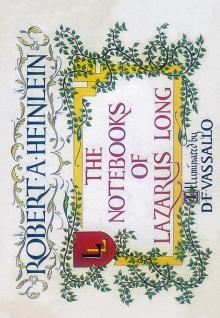 The Notebooks of Lazarus Long
The Notebooks of Lazarus Long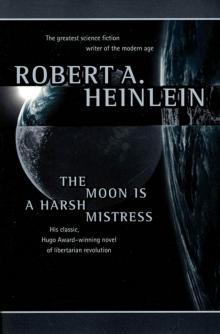 The Moon Is a Harsh Mistress
The Moon Is a Harsh Mistress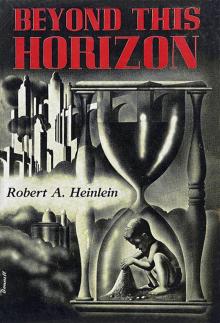 Beyond This Horizon
Beyond This Horizon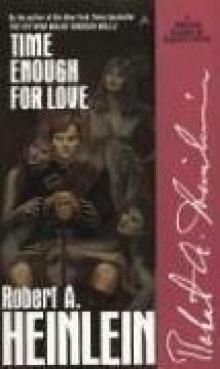 Time Enough for Love
Time Enough for Love Tunnel in the Sky
Tunnel in the Sky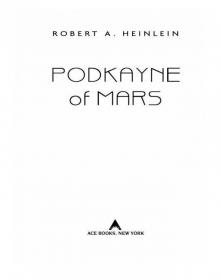 Podkayne of Mars
Podkayne of Mars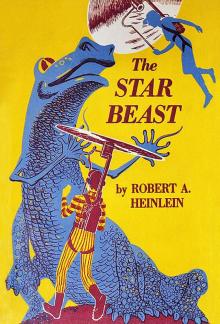 The Star Beast
The Star Beast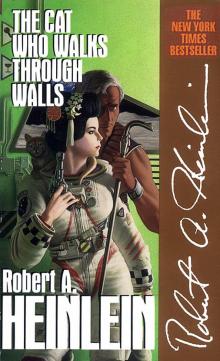 The Cat Who Walks Through Walls
The Cat Who Walks Through Walls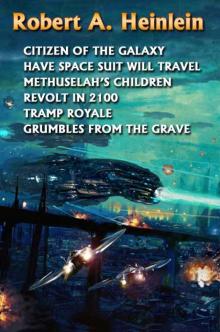 Grumbles From the Grave
Grumbles From the Grave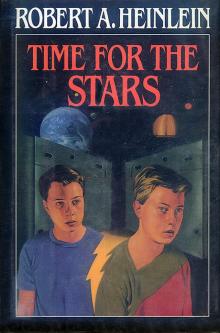 Time for the Stars
Time for the Stars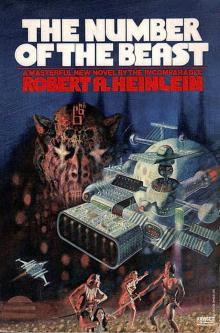 The Number of the Beast
The Number of the Beast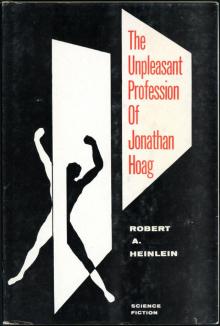 The Unpleasant Profession of Jonathan Hoag
The Unpleasant Profession of Jonathan Hoag Sixth Column
Sixth Column To Sail Beyond the Sunset
To Sail Beyond the Sunset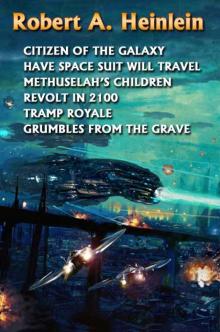 Revolt in 2100
Revolt in 2100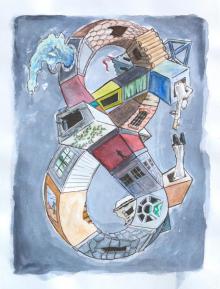 And He Built a Crooked House
And He Built a Crooked House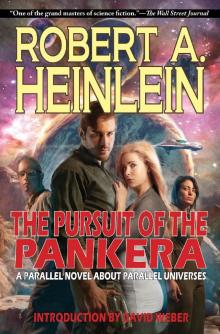 The Pursuit of the Pankera: A Parallel Novel About Parallel Universes
The Pursuit of the Pankera: A Parallel Novel About Parallel Universes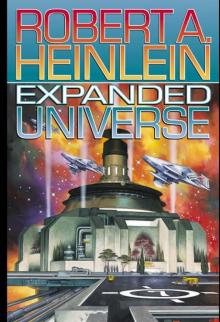 Expanded Universe
Expanded Universe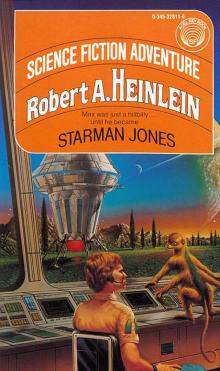 Starman Jones
Starman Jones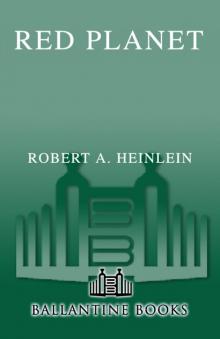 Red Planet
Red Planet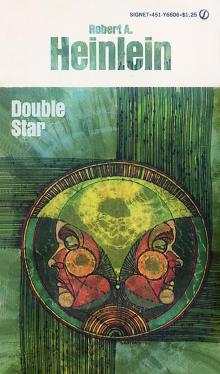 Double Star
Double Star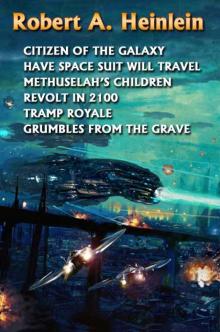 Citizen of the Galaxy
Citizen of the Galaxy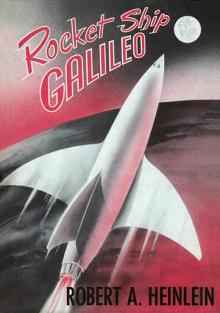 Rocket Ship Galileo
Rocket Ship Galileo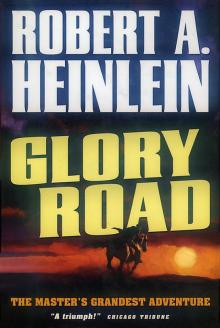 Glory Road
Glory Road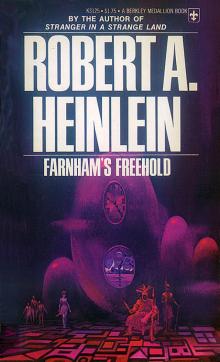 Farnham's Freehold
Farnham's Freehold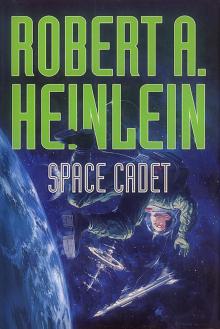 Space Cadet
Space Cadet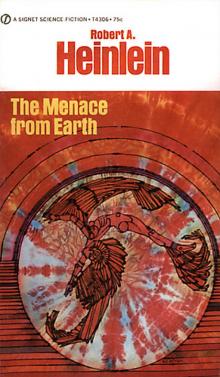 The Menace From Earth ssc
The Menace From Earth ssc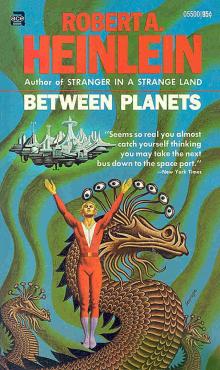 Between Planets
Between Planets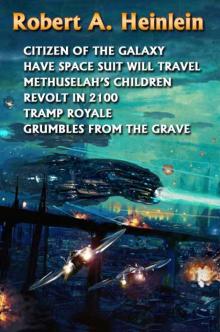 Methuselah's Children
Methuselah's Children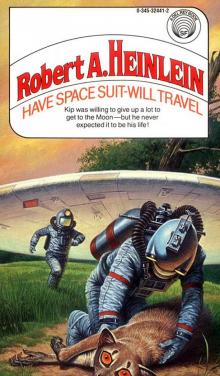 Have Space Suit—Will Travel
Have Space Suit—Will Travel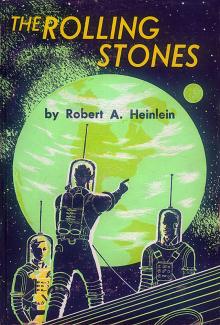 The Rolling Stones
The Rolling Stones Door Into Summer
Door Into Summer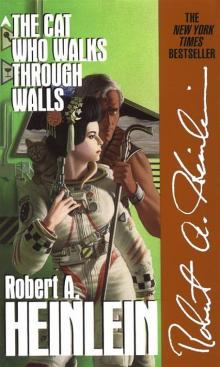 The Cat Who Walked Through Walls
The Cat Who Walked Through Walls Magic, Inc
Magic, Inc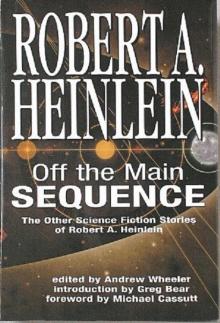 Off The Main Sequence
Off The Main Sequence Pied Piper
Pied Piper The Unpleasant Profession Of Jonathan Hoag And Other Stories
The Unpleasant Profession Of Jonathan Hoag And Other Stories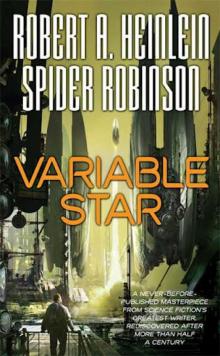 Variable Star
Variable Star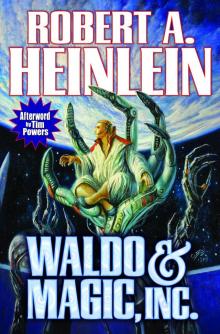 Waldo, and Magic, Inc
Waldo, and Magic, Inc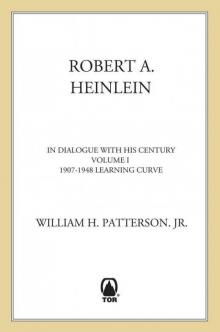 Robert A. Heinlein: In Dialogue With His Century
Robert A. Heinlein: In Dialogue With His Century Waldo
Waldo Bulletin Board
Bulletin Board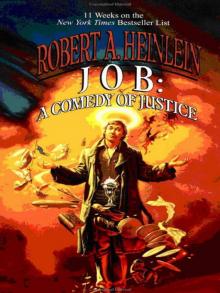 Job: A Comedy
Job: A Comedy Tramp Royale
Tramp Royale A Tenderfoot in Space
A Tenderfoot in Space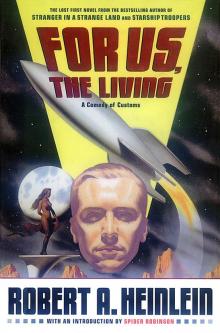 For Us, the Living
For Us, the Living Destination Moon
Destination Moon Logic of Empire
Logic of Empire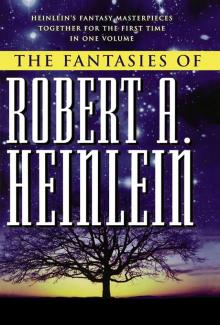 The Fantasies of Robert A. Heinlein
The Fantasies of Robert A. Heinlein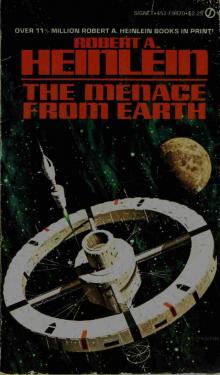 The Menace From Earth
The Menace From Earth From the Notebooks Of Lazarus Long
From the Notebooks Of Lazarus Long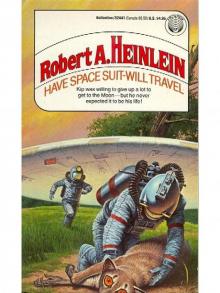 Have Space Suit - Will Travel
Have Space Suit - Will Travel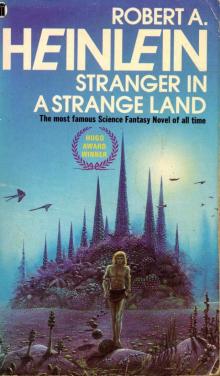 A Stranger in a Strange Land
A Stranger in a Strange Land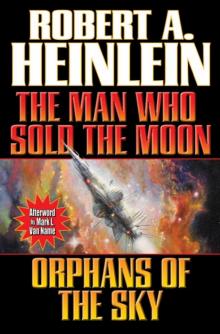 Man Who Sold the Moon / Orphans of the Sky
Man Who Sold the Moon / Orphans of the Sky